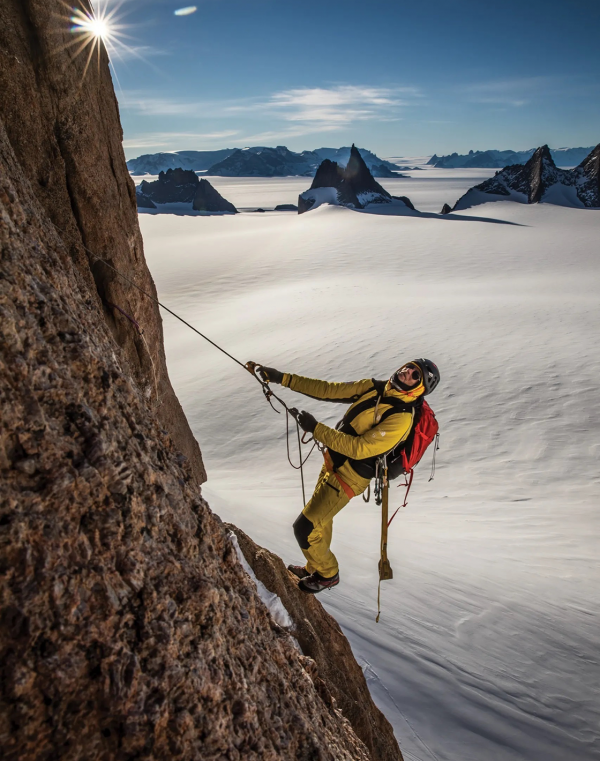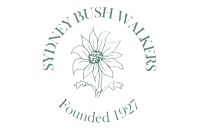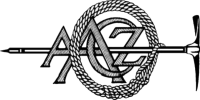- Home
- Nepal
- Adventure Activities
- Peak Climbing
- Mountain Expedition
- Local Tours
- Sirubari Village Homestay
- Ghale Gaun
- Kalinchowk Tour
- Halesi Mahadev - Maratika Cave package
- Chitwan Jungle Safari
- Day tour in Kirtipur
- Day tour in Kathmandu City
- Spiritual Tour to Muktinath
- Chitlang and Kulekhani
- Bardiya National Park
- Jeep Tour to Rara Lake
- Gosaikunda Lake
- Manakamana day Tour with cable-car ride
- 4WD Jeep Tour to Upper Mustang
- Family Holidays
- Heli & Mountain Flights
- Trekking Routes
- Kailash Mansarovar
- Bhutan
- Tibet
- Multi Country
- Domestic Flights
- Contact
- Home
- Nepal
- Adventure Activities
- Peak Climbing
- Mountain Expedition
- Local Tours
- Sirubari Village Homestay
- Ghale Gaun
- Kalinchowk Tour
- Halesi Mahadev - Maratika Cave package
- Chitwan Jungle Safari
- Day tour in Kirtipur
- Day tour in Kathmandu City
- Spiritual Tour to Muktinath
- Chitlang and Kulekhani
- Bardiya National Park
- Jeep Tour to Rara Lake
- Gosaikunda Lake
- Manakamana day Tour with cable-car ride
- 4WD Jeep Tour to Upper Mustang
- Family Holidays
- Heli & Mountain Flights
- Trekking Routes
- Kailash Mansarovar
- Bhutan
- Tibet
- Multi Country
- Domestic Flights
- Contact
Bhutan with Gangtey Excursion

An exciting Trekking experience
5 evenings 6 days Bhutan Tour bundle makes visiting in all the antique legacies of the real city in a simple, helpful and agreeable route with completely described visits that bless holding and intriguing actualities of city and Bhutan's also. Our entrancing visit to Bhutan covers a massive canvas of engineering, scenes and history from Trashichhoedzong to the King Throne Room, from Punakaha Dzong to Wangduephodrang and Tiger Next Monastery to demolish Drukgyel Dzong. The bundle likewise equity to a portion of the world's handpicked workmanship displays and the gathering like the national historical center, library and craftsmanship school. We oblige in a social tea house and visit apartment families in a town to find out about their way of life and lifestyle.
2+
Detailed Itinerary
- Day 01: Arrive Paro
Flight to Paro is one of the most spectacular of all mountain flights. Whether flying along the Himalayan range from Kathmandu or over the foothills, each flight is a mesmerizing feat and offers exciting descent into the Kingdom. On arrival at the airport, received by our representative and then transfer to Thimphu. Overnight. - Day 02: Thimphu
Visit Trashichhoedzong, the beautiful medieval fortress/monastery which houses most of the Government’s office and King’s Throne room It is also the summer residence of Je Khenpo, the Chief Abbot. Then visit National Library which has vast collection of ancient Buddhist texts and manuscripts.After that drive to Arts & Crafts School, famous for traditional thangkha paintings. Here you will see, students at work producing intricate design on cloth.After lunch visit Handicrafts Emporium which displays wide assortment of beautifully handwoven and crafted products. Then drive to Memorial Chorten, the stupa built in the memory of Bhutan’s Third King who is popularly regarded as Father of modern Bhutan. The paintings and statues inside this monument provide a deep insight into Buddhist philosophy. Overnight at the hotel in Thimphu. - Day 03: Thimphu/ Punakha ( 75 Km, 3 Hours )
After breakfast drive to Punakha with a short stop at Dochula pass (3,080m) stopping briefly here to take in the view and admire the chorten, mani wall, and prayer flags which decorate the highest point on the road. If skies are clear, the following peaks can be seen from this pass (left to right): Masagang (7,158m), Tsendagang (6,960m), Terigang (7,060m ), Jejegangphugang (7,158 m ), Kangphugang (7,170 m ), Zongphugang (7, 060 m ), a table mountain that dominates the isolated region of Lunana – finally Gangkar puensum, the highest peak in Bhutan at 7,497m.
Later visit Punakha Dzong, built strategically at the junction of Pho Chhu and Mo Chhu rivers in 1637 by Shabdrung Ngawang Namgyal to serve as the religious and administrative centre of the region, Punakha Dzong has played an important role in Bhutan’s history. Damaged by four catastrophic fires and an earthquake, the Dzong has now been fully restored.After that drive to Wangduephodrang visiting Dzong and local market. The district of Wangduephodrang is also famous for its bamboo products, slate and stone carvings. Overnight at the hotel in Punakha. - Day 04: Punakha – Paro (125 Km, 4 Hours)
After breakfast drive to Paro en route visit Simtokha Dzong, the oldest fortress of the Kingdom built in 1627, it now houses the School for religious studies.Afternoon in Paro visit Ta Dzong, the National Museum of the Kingdom. Originally built as Watch Tower since 1967 it is serving as the National Museum of the country and holding fascinating collection of art, artifacts, thangkha paintings and Bhutan’s exquisite postage stamps.Afterwards, walk down a hillside trail to visit Rinpung Dzong. Built in 1646 by Shabdrung Ngawang Namgyal , the first spiritual and temporal ruler of Bhutan, the Dzong houses the monastic body of Paro, the office of the Dzongda (district administrative head) and Thrimpon (judge) of Paro district. Overnight at the hotel in Paro. - Day 05: Paro
After breakfast drive north of Paro valley to ruins of Drukgyel Dozng. From this fort Bhutanese repelled several invasions by Tibetan armies. Nearby visit traditional Bhutanese Farm House which offers good insight into lifestyle of local people.Then take an excursion to Taktsang Monastery, the most famous of Bhutanese monasteries. It is said that Guru Rinpoche arrived here on the back of a tigress and meditated at this monastery hence it is called “Tiger’s Nest”. The excursion to monastery takes about 5 hours for round trip.While return to Paro town visit en route Kyichu Lhakhang, one of the oldest and most sacred shrines of the Kingdom. Overnight at the hotel in Paro. - Day 06: Depart Paro
After breakfast drive to the airport for flight to onward destination.
This trip can be redesigned or redeveloped as per your taste, For more information please e-mail us at This email address is being protected from spambots. You need JavaScript enabled to view it.
Cost and dates
We do small group trek or private trip as your request.
For quick information / contact us at whatsapp/viber + 977 9841815039
Or Drop us inquiry at This email address is being protected from spambots. You need JavaScript enabled to view it.
Tips & Resources
What's Included
- Private transportation.
- All necessary travel permits
- English speaking local guide.
- Accommodation on single/twin room basis.
- Sightseeing and monastery entrance fees as per the itinerary
- Meal plan: Full Board Basis
What's Excluded
- Insurance of any kind.
- Additional cost due to natural calamity and unforeseen circumstance
- Personal expenses such as drink, guide tips & etc.
Useful Info
Visa Information
Indian, Bangladeshis and Maldivian nationals can obtain a visa at the port of entry on producing a valid passport with a minimum of 6 month validity (Indian nationals may also use their Voters Identity Card (VIC). For other tourists, you will to need to acquire visa clearance in advance. Visas are processed through an online system by your licensed Bhutanese tour operator, directly or through a foreign travel agent. Tourists are also required to book their holiday through a Bhutanese tour operator or one of their international partners. The tour operator will take care of Visa arrangements for visitors.
You are required to send the photo-page of your passport (passport scanned copy) to your tour operator who will then apply for your visa. The visa will be processed by the Tourism Council of Bhutan (TCB) once the full payment of your holiday (including a USD $50 visa fee) has been wire transferred and received in the TCB bank account. Once received the visa clearance will be processed within 72 working hours. At your point of entry you will be required to show your visa clearance letter, and the visa will then be stamped into your passport.
Weather Information
There is no appropriate season as which is go say that Bhutan’s warm and temperate climate, never-ending festivals and rich and abundant heritage sites provide visitors with a wide array of experiences throughout the year across the country. Bhutan has all four seasons and the climate varies widely depending on the altitude.
Spring (March, April & May) - This time is considered the most beautiful time of the year, resplendent and ablaze with a spectacular array of bright colors. This is the time when the valleys are green with fresh vegetation and fruit trees are blossoming – the time when locals are naturally mirthful and cheery; when visitors are most welcome. Also, you can witness the famous Paro tsechu festival.
Autumn (September, October & November) - Autumn is lovely with clear and crisp blue skies, providing a grand view of some of the tallest unclimbed mountains in the world. It is the best time for trekking and traveling. The climate is cool and temperate and you can get lovely photography opportunities of willows shedding their golden brown leaves, the solitude of parks and somber views of dzongs and monasteries.
Monsoon (June, July & August) - During these months, Bhutan receives more rainfall than any other region in the Himalayas. Glorious sapphire skies and warm weather is a pleasant time to spend visiting places of cultural and historical interest though this season is not the best time for trekking. Enjoy a cup of warm, aromatic tea while watching the rainfall from your hotel window. Or if you possess an adventurous spirit, grab an umbrella/raincoat while it is raining and take a day tour through the town.
Winter (December, January & February) - Winter in Bhutan is sunny, cool and agreeable to say the least. Much of the east-west highway remains snowbound during winter. It is the best time to tour the western districts of Paro, Wangdue, Punakha, Thimphu and Haa. One of the chief attractions in winter is the beautiful Gangtey (Phobjikha) valley where you can expect to see a wide expanse of rolling plain with bamboo shrubs.
Safety Guidelines
- Credit cards are not a convenient source of payment in Bhutan as only a handful of hotels in a few places provide this facility. Also, only MasterCard and Visa. US dollars are the most convenient currency and are cashed by most banks.
- You should avoid drinking tap water altogether, but it is okay to use it for brushing your teeth. Bottled water is widely available and is best for drinking. It is also wise to carry water purification tablets when trekking in remote locations of Bhutan.
- The local currency is the Ngultrum, which is pegged to the Indian Rupee. Note: The Indian Rupee in denominations of 500 and 1000 are no longer accepted in Bhutan.
- Bhutan is the only country in the world that has banned the consumption and sale of tobacco, resulting in smoking being largely disallowed in public places. Having said that, consumption is not completely prohibited in Bhutan so if you want to smoke, bring your own cigarettes and ask your guide where you can light up. (seal opened pack only)
- Tuesdays are considered the national 'dry day,' with the sale of alcohol prohibited.
- When taking photos/filming inside Dzongs, monasteries, temples, or any religious institutions, check with your guide whether it is permitted as some areas do not allow it.
Visit us
-
JP Marga, Thamel, Kathmandu, Nepal
-
+977-01-5365371
-
+977 98418-15039
(Whats App, Viber & Telegram)








